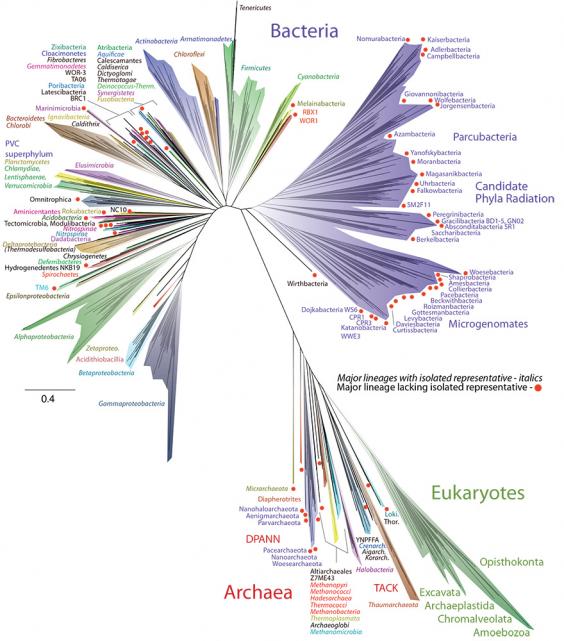New 'Tree of Life' sheds light on the huge diversity of life on Earth
American scientists have developed a new 'Tree of Life', which sheds fresh light on the sheer diversity of life on Earth.
The tree of life, first described as we know it by Charles Darwin in On the Origin of Species, is the name given to a diagram which shows the relationships between all organisms, living and extinct.
Researchers at the University of California, Berkeley, have now given this important diagram a major overhaul, by including a wealth of newly-discovered bacteria and other microorganisms.

http://www.independent.co.uk/news/science/new-tree-of-life-uc-berkeley-design-life-diversity-darwin-a6980506.html
2naSalit
(86,323 posts)Interesting, I downloaded the image to study later. Thanks for posting this.
bemildred
(90,061 posts)Four billion years is a long time, lots of chemical magic down there if you can find it. We live in their world, not the other way around.
2naSalit
(86,323 posts)I live on a caldera with active thermal features which host incredible microbial communities, some of which are being studied for human medical purposes among other stuff. It's just amazing to try and grasp sometimes. And living outside or spending any time outside observing the natural world helps with understanding how the natural world works and recognize that we aren't greater than the natural world. I wish our species would stop trying to control nature and learn to live as a component instead.
bemildred
(90,061 posts)And now they fiind things living in the rock a mile or two down, and in the deep muck in the sea floor trenches, and other places we never think about. When we are gone, they will still be here. You notice in the story the only way they can see these creatures is DNA analysis, and you see estimates that 90% of bacteria, for example, are or that sort. If you could grow them in a lab and watch them do their thing, you could find you have amazing chemical engines on your hands, and microbial production scales well. More food, more bugs.
muriel_volestrangler
(101,265 posts)but what their approach gives as the best answer. Here's the paper (full text is free):
http://www.nature.com/articles/nmicrobiol201648
...
The lower support for deep branch placements is a consequence of our prioritization of taxon sampling over number of genes used for tree construction. As proposed recently, the Eukarya, a group that includes protists, fungi, plants and animals, branches within the Archaea, specifically within the TACK superphylum and sibling to the Lokiarchaeota. Interestingly, this placement is not evident in the SSU rRNA tree, which has the three-domain topology proposed by Woese and co-workers in 1990 (Supplementary Fig. 2). The two-domain Eocyte tree and the three-domain tree are competing hypotheses for the origin of Eukarya; further analyses to resolve these and other deep relationships will be strengthened with the availability of genomes for a greater diversity of organisms.
In the eurkaryotes, opisthkonta are animals and fungi; plants are in archaeplastida.
bemildred
(90,061 posts)For creatures that evolve by random mutation, it makes sense. Order is not that important, new abilities are.
What the genome says now doesn't necessarily tell you anything much about what it was in the past, or where it came from. (Though it usually does.)
But this approach based on the genetics seems closer to what you want to try to describe it, it is the evolution and survival of particular genetic "skills" that should provide the most useful organizing frame for how developments occurred.
Which is sort of what the OP says.
I particularly like the bits about the great lacunae in our knowledge of what's out there:
"The depiction is both a global overview and a snapshot of the diversity within each major lineage. The results reveal the dominance of bacterial diversification and underline the importance of organisms lacking isolated representatives, with substantial evolution concentrated in a major radiation of such organisms.".
I have sort of inferred that for some time now, but you never know until somebody provides evidence,